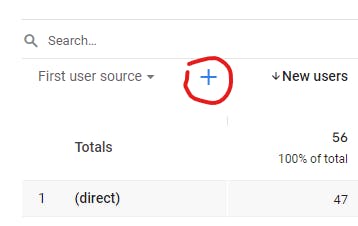Mastering Secondary Dimension in Google Analytics: A Total Overview
Wiki Article
Unlock Deeper Insights With Secondary Measurement in Google Analytics
With the substantial area of data readily available in Google Analytics, the use of additional dimensions can significantly enhance your analytical abilities. These additional layers of data offer a nuanced point of view that can brighten elaborate information within your main metrics. By purposefully integrating additional measurements right into your analysis, you can discover beneficial understandings that could or else stay obscure. The capability to analyze and dissect customer habits with better precision opens up a realm of possibilities for enhancing strategies and boosting efficiency.Recognizing Main Vs. Additional Dimensions
When examining data in Google Analytics, it is important to compare secondary and main dimensions to obtain deeper understandings into customer behavior. Main dimensions are the major categories through which you can see your data, such as touchdown, gadget, or source/medium page. These dimensions offer the basic structure for arranging and understanding your information. On the other hand, secondary measurements permit you to additional study your key measurement data. By including an additional dimension, you can layer on extra details to your primary dimension, making it possible for a more granular evaluation. As an example, if your primary measurement is the source/medium whereby individuals got here on your site, adding a second measurement like geographic area can disclose where those customers are situated geographically. This included layer of info can assist you identify trends, patterns, or anomalies that may not have actually appeared when looking at the primary dimension alone. Leveraging both secondary and key measurements in Google Analytics is important for detailed data evaluation and notified decision-making.Using Secondary Measurements Properly
By incorporating additional measurements together with primary measurements, marketing experts and analysts can delve much deeper right into the specifics of user interactions on their sites. Secondary measurements allow users to sector and filter primary measurement data even more, providing a more detailed sight of user demographics, habits, and interactions.Furthermore, second dimensions allow customers to contrast and contrast different data points within a solitary report, assisting in a more detailed evaluation of customer habits patterns. By leveraging additional measurements successfully, services can discover surprise understandings, optimize their advertising and marketing approaches, and boost the total user experience on their internet sites.
Exploring Typical Second Dimension Mixes
To even more analyze user behavior and fads in Google Analytics, it is valuable to check out usual combinations of secondary dimensions. Some typical additional dimension combinations that offer useful insights consist of evaluating web traffic resources with customer locations to comprehend where internet site site visitors are coming from geographically and exactly how they located the site. Analyzing individual actions metrics with secondary dimensions such as demographics or interests can help in targeting certain target market segments extra effectively.Applying Additional Measurement in Customized Information
Utilizing secondary measurements in custom-made records permits a much more thorough analysis of data in Google Analytics, boosting the deepness of understandings obtained. When producing custom records in Google Analytics, incorporating additional measurements can offer a more thorough view of just how various dimensions engage with each other. This function allows users to dive much deeper into their data and discover useful connections that may not be immediately noticeable.By applying second dimensions in custom-made reports, customers can get a far better understanding of their web site or application website traffic. Combining the main dimension of "source/medium" with the additional dimension of "touchdown web page" can expose which landing pages are performing ideal for web traffic coming from specific resources. This understanding can help online weblink marketers optimize their projects and improve general conversion rates.

Enhancing Data Visualization With Second Measurement
When checking out information in Google Analytics personalized records, integrating additional dimensions not only gives an extra comprehensive evaluation however likewise enhances the graph of understandings via information visualization. By including a secondary dimension to your records, you can enrich the means information exists, making it easier to identify patterns, fads, and connections within your internet site's efficiency metrics.Secondary measurements can help you segment your information even more, enabling a deeper understanding of customer actions and interactions on your site. When trying to isolate specific variables that may influence your site's performance., this boosted level of granularity can be particularly beneficial.

Verdict
In final thought, leveraging additional measurements in Google Analytics permits for a much more extensive evaluation of information, leading to much deeper understandings and more educated decision-making. Secondary Dimension in Google Analytics. By adding added layers of details to key information collections, online marketers and analysts can uncover surprise patterns, patterns, and relationships that provide a granular view of user behavior and interactions. This improved level of understanding makes it possible for optimization of campaigns and customized approaches for specific target market sectors, inevitably improving performance and conversion ratesOn the other hand, secondary dimensions allow you to more explore your main dimension information. By including a second dimension, you can layer on added information to your primary measurement, allowing a much more granular analysis. If your primary measurement is the source/medium via which users showed up on your site, including a secondary measurement like geographic area can reveal where those customers are situated geographically. By including second measurements alongside primary dimensions, More hints analysts and marketing experts can dive deeper right into the specifics of customer interactions on their sites. Additional measurements enable users to section and filter key dimension data even more, supplying a much more comprehensive view of user interactions, actions, and demographics.
Report this wiki page